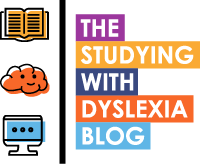In this article I am thrilled to introduce children’s author, Phillipa Warden. Phillipa is going to share some great ideas for engaging dyslexic learners with story writing.
Phillipa will tell you about her book and it’s links with dyslexia, later in this article but I wanted to quickly tell you about our meeting in a beautiful village in the Cambridgeshire countryside. Conducted on a park bench, meeting social distancing guidelines, we spent the hour talking more about engaging dyslexic learners with story writing than her books! Phillipa’s passion for making the desire to write stories ‘infectious’ inspired me to invite her to write an article on this topic that you, as the supporter of a dyslexic learner, can take some of her ideas and have fun with your dyslexic learners writing stories.
Many authors of children’s books are dyslexic and for me the takeaway in this article is that even if a child is struggling with literacy, there is no reason why they can’t put together great stories. We just need to support them in getting them written down and shared! Welcome Phillipa!
Phillipa Writes.
I had so many of my favourite children’s books in mind when I wrote my own. The Mog series by Judith Kerr, Finn Family Moomintroll by Tove Jansson, the picture books of Richard Scarry, Elsa Beskow, and Graham Greene all inspired me to write the tales centred around my two children, Rupert and Emma.
I’m the author of Rupert’s Snowman, a picture book about a little boy who refuses to leave his snowman behind when he returns home after a snow day spent with his mum. It’s based on a true story and so is my next book, Emma’s Sunflower which is currently with the illustrator Grace Ward who is dyslexic herself. I hope to publish this next Spring.
I admired these earlier books for their warm and empathetic characters, cosy scenes, engaging playful illustrations and their settings amongst nature. The beautiful descriptions in the books, for example, an autumn leaf described as ‘…a letter from a tree that writes in gold, “Remember me!”’ from Morning Is A Little Child by Joan Walsh Anglund, another childhood favourite, have remained with me into adulthood. A short course at Cambridge University taught by the author Dr Sarah Burton also helped me to identify the key ingredients of a good short story.
I wanted to write uncomplicated, humorous and gentle tales featuring wildlife with lessons of empathy and hope at their heart. The snowman in Rupert’s Snowman represents anyone who doesn’t want to be left out in the cold. I didn’t want to burden the young reader, this lesson is just below the surface like a field beneath a dusting of snow.
Children’s picture books aimed at 2-6 year olds are approximately 32 pages so I adhered more or less to this. I drew a storyboard with one sentence per page, stills of which became the family Christmas cards that year. I asked Grace Ward to illustrate the book and she provided me with charming illustrations which were calm, whimsical and colourful. She chose a dyslexia friendly font, Blockhead Unplugged and incorporated in a way I hadn't seen before, wrapping itself around scarves and rolling down the hills with snowballs. In Emma’s Sunflower I included interesting metaphors, so for example a family of Greenfinch sitting on a telephone wire became “music notes upon a stave” to introduce new vocabulary and interesting imagery to young readers.
An example of Grace Ward’s illustrations in Rupert’s Snowman
Some accompanying lesson plans to the books
As an early years educator and after school club provider I’ve written lesson plans to accompany my books. The simplest is a template of the snowman for the very young to decorate using differently coloured craft papers and fabrics. Of course, he is wearing an upside-down cup, as he does in the story, which the children will find funny and can be designed with a pattern of their choice.
I commissioned a craftsperson to create a painted wooden spoon for each of the characters in my book. You can add anything related to your story to the spoons including settings, objects and words.They can be used in so many ways by teachers, parents and librarians to enhance the child’s experience of the story. Activities include allowing the children to paint the simple wooden spoons themselves. Ask the children to lay out the spoons in the order in which they appear in the story or become the character on a spoon and describe the person or animal shown. Paint more than one spoon with the same image or word and play pairs by turning them upside down.
Another favourite activity encourages children to go outside to experience the sights and sounds of nature throughout the different seasons. My ‘look through the snowman lens’ is a downloadable template to cut out. A prompt in each corner asks “What can you smell, hear and see?” The question “How do you feel?” relates to the book’s central message of empathy and allows children to openly talk about their feelings.
The activities are a fun resource which will become a valuable part of any multi sensory classroom tool kit. Please do go ahead and download those from Rupert’s Snowman from here. I am currently designing some lesson plans for Emma’s Sunflower.
I think it’s very important to take the learning and love of the stories beyond the printed page and to allow younger readers to develop into independent storytellers. The activities are designed with this in mind.
I hope that your children enjoy them and that you might find time to look at some of the stories I enjoyed as a young girl.







